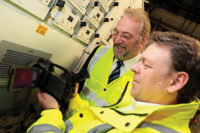The first or primary stage involves lockout/tagout, as required by OSHA, 29 CFR 1910.147, The Control of Hazardous Energy Sources. The secondary stage of shutdown relates to the atmospheric condition of the area within which workers are required to carry out maintenance and/or servicing. OSHA Standard 29 CFR 1910.146, Permit-required Confined Spaces, requires the plant to ensure “acceptable entry conditions†that are free from any of the following:
Toxic gases
Of these risks, one of the most common is the potential human exposure to, or an unplanned combustion of, a gas or liquid. The toxic gases most likely to be present in confined spaces and open plant areas are carbon monoxide (CO), hydrogen sulphide (H2S), ammonia (NH3), chlorine (Cl2) and sulphur dioxide (SO2).
The OSHA 1910.146 legislation requires companies to test internal atmospheres before an employee enters and then periodically test the atmosphere to ensure there is no accumulation of a hazardous atmosphere while the work is taking place. The proper gas detection equipment, therefore, must be an integral part of any manufacturer’s health and safety program.
Keys to consider
Gas detection products and systems available to help manufacturers and processors meet legislation range from portable, disposable personal “safety badges†for single-gas detection, to more sophisticated portable multigas detection instrumentation, to full fixed systems for protecting an entire plant or area. Consider the following key issues when determining your needs:
For short-term, multi-user applications, such as use by subcontractors on a large plant for example, disposable “safety badge†detectors may be the most cost-effective option. Where there is a more sophisticated datalogging requirement, a serviceable detector with built-in intelligence will probably offer a better solution.
More sophisticated instruments allow gas and calibration data to be downloaded to a PC for storage and analysis.
There may be a threat of gas in open areas, particularly if the shutdown is part of an expansion or renovation where hot-work permits may be in place. Open process areas may be protected by fixed-point detectors, which are able to provide protection for both people and plant in the area. However, in the absence of such a fixed-point system, a “temporary fixed†system may provide a cost-effective solution. This is achieved by using portable sensors mounted and linked together to provide a protective system for the duration of the work.
